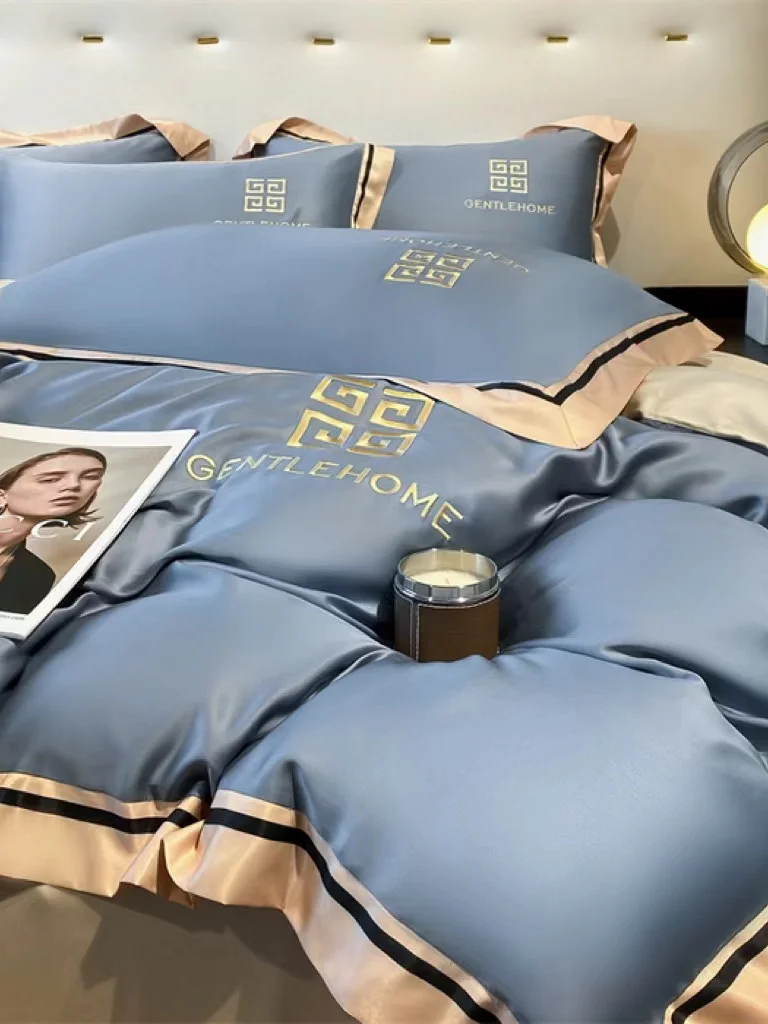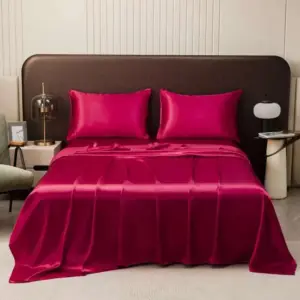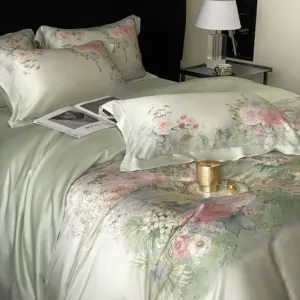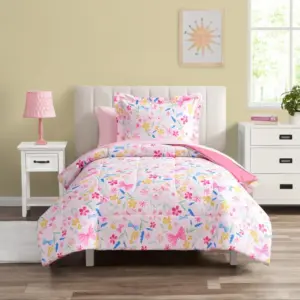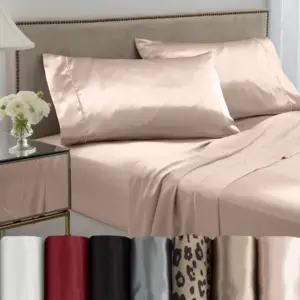Introduction to the World of Silk Bedding
Silk bedding represents the pinnacle of luxury in the world of sleep essentials. Made from natural protein fibers produced by silkworms, genuine silk offers a combination of opulence and practical benefits that few other materials can match. This exquisite fabric transforms an ordinary bedroom into a sanctuary of comfort and elegance.
For over 5,000 years, silk has maintained its status as one of the world’s most coveted textiles. From its origins in ancient China to its journey along the historic Silk Road, this fabric has adorned royalty and aristocracy throughout human history, earning its well-deserved title as “the queen of fabrics.” Today, silk bedding basics continue this legacy, bringing historic luxury into modern bedrooms.
What sets silk apart isn’t merely its lustrous appearance or smooth texture. Unlike synthetic alternatives, silk offers tangible benefits for your skin, hair, and overall sleep quality. It represents an investment in both wellness and luxury—a thoughtful addition to your home that pays dividends in comfort and health.
As we explore the world of luxury silk bedding sets, we’ll discover the science behind silk’s remarkable properties, learn how to distinguish quality pieces, and understand proper care techniques. Whether you’re considering your first silk pillowcase or a complete bedding transformation, this guide will provide everything you need to make informed decisions about this premium bedding option.
The Science-Backed Benefits of Silk Bedding
Skin Health Benefits
The relationship between silk and skin health goes beyond luxury—it’s rooted in the fabric’s unique molecular structure. Silk’s incredibly smooth surface creates minimal friction against your skin, significantly reducing the formation of sleep creases and wrinkles. Unlike cotton or synthetic materials, silk allows your skin to glide across its surface without tugging or pulling.
Silk’s exceptional moisture retention capabilities work to maintain optimal skin hydration throughout the night. Rather than absorbing your skin’s natural moisture (as cotton does), silk helps preserve your skin’s hydration balance. This natural moisture preservation can be particularly beneficial for those with dry or sensitive skin.
The protein structure of silk shares amino acids similar to those found in human skin, potentially offering nourishing properties. These proteins, combined with silk’s gentle touch, make silk bedsheets worth considering for anyone looking to enhance their skincare routine through better bedding choices.
Hair Health Advantages
Hair care experts increasingly recommend silk for its remarkable benefits to hair health and appearance. The smooth surface drastically reduces friction that causes hair breakage, split ends, and frizz. When you sleep on traditional cotton pillowcases, the rough fibers can catch and tangle hair, leading to morning bedhead and potential damage.
Silk’s friction-reducing properties are particularly beneficial for those with curly, coily, or fragile hair types. The gentle surface allows curls to maintain their definition overnight rather than becoming crushed or tangled. Additionally, silk helps preserve your natural hair oils rather than absorbing them, which can be especially beneficial for those with dry or processed hair.
Research shows that silk pillowcases benefit hair by reducing tangles and breakage while helping maintain style and moisture. Many users report waking with smoother, more manageable hair after switching to silk bedding.
Temperature Regulation Properties
One of silk’s most remarkable qualities is its natural thermoregulating ability. This protein-based fiber adapts to your body temperature, keeping you cool during warm nights and comfortably warm when temperatures drop. This versatility makes silk bedding appropriate for year-round use.
The secret lies in silk’s unique molecular structure and natural protein fibers. These fibers create a breathable weave that allows air circulation while simultaneously providing insulation when needed. For hot sleepers or those experiencing night sweats, cooling silk sheets can provide significant relief by wicking away moisture without retaining heat.
Unlike synthetic materials that can trap heat and cause uncomfortable sleep, silk’s natural temperature regulation helps maintain your body’s ideal sleep temperature throughout the night, contributing to deeper, more restful sleep.
Hypoallergenic Properties
For allergy sufferers, silk offers natural relief through several inherent characteristics. First, silk’s tight weave and natural properties make it resistant to dust mites, mold, and mildew—common allergens found in bedding. The smooth surface provides fewer places for these microscopic irritants to hide compared to other fabrics.
Additionally, properly certified silk typically contains no irritating chemicals that might trigger reactions in sensitive individuals. Many people with skin sensitivities, eczema, or respiratory allergies report improvement in their symptoms after switching to silk bedding.
The hypoallergenic properties of silk fabric make it an excellent choice for those seeking bedding that supports better respiratory health and reduced skin irritation while sleeping.
Understanding Silk Quality: Types, Grades, and Measurements
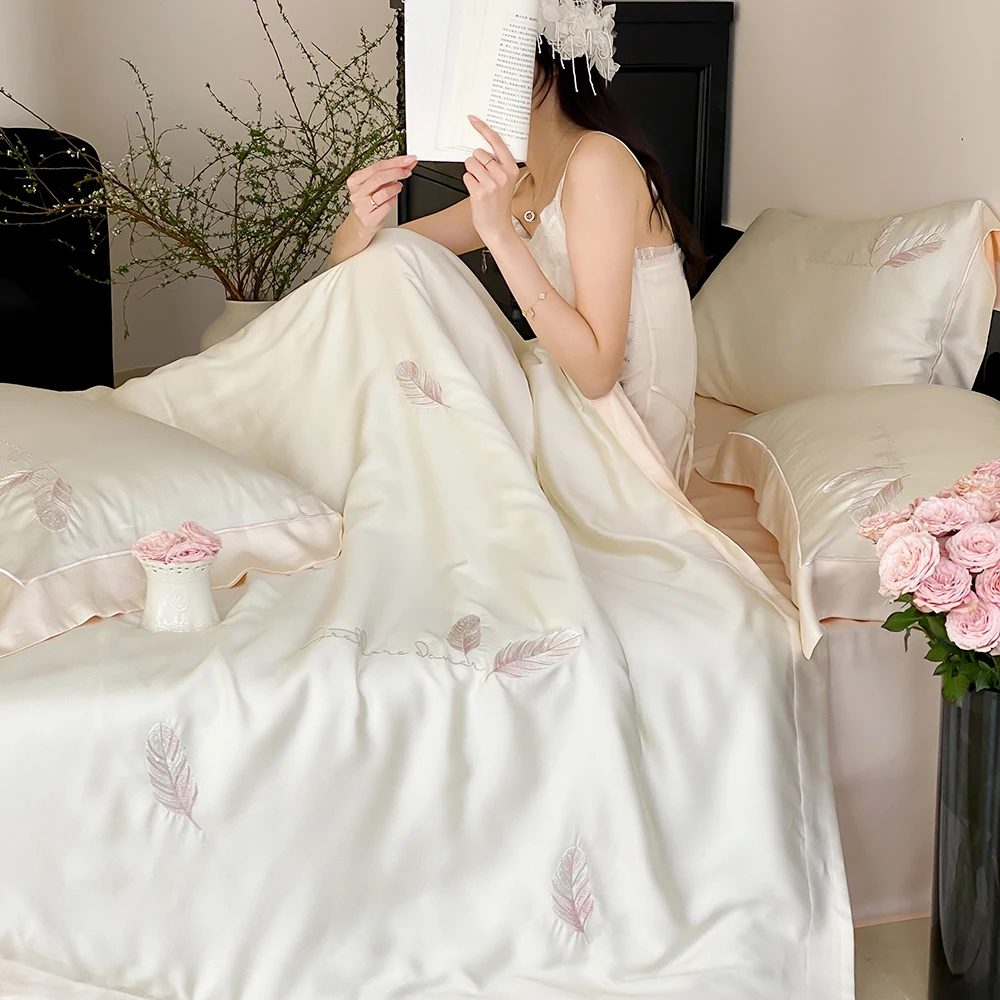
Types of Silk for Bedding
When exploring silk bedding options, understanding the different types of silk is essential for making an informed choice. Mulberry silk stands as the gold standard for bedding, produced by silkworms fed exclusively on mulberry leaves in controlled environments. This careful cultivation results in long, uniform fibers that create exceptionally smooth, strong, and lustrous fabric. Approximately 90% of silk production worldwide is mulberry silk, making it the most common type used in mulberry silk bedding sets.
Tussah silk (sometimes called wild silk) offers a more rustic alternative. Produced by wild silkworms that feed on oak and juniper leaves, Tussah silk has shorter, coarser fibers with a more textured feel and natural color variations. While less refined than mulberry silk, it provides a unique, organic aesthetic at a lower price point.
Other varieties like Eri and Muga silk exist but are rarely used for bedding due to their limited production and specialized characteristics. These silks typically appear in specialized textiles rather than everyday bedding products.
The Silk Grading System Explained
Silk quality follows a grading system ranging from A (lowest) to 6A (highest), with several factors determining where a silk product falls on this spectrum. The primary considerations include fiber length, uniformity, purity, and consistency.
The highest grade, 6A long-strand mulberry silk, represents silk with exceptionally long, uniform fibers with minimal impurities or irregularities. These characteristics create a smoother, more lustrous finish and enhance durability. As you move down the grading scale, fiber length typically decreases, and irregularities become more common.
Grade significantly impacts a silk product’s feel, appearance, and lifespan. Higher-grade silk (5A-6A) offers the smoothest texture, most consistent appearance, and greatest durability—reflected in its premium price. Understanding the silk momme weight guide helps consumers assess silk quality beyond just the grade designation.
Understanding Momme Weight
Momme (pronounced “mummy”) weight serves as the density measurement for silk fabrics, similar to thread count for cotton. Specifically, it measures the weight in pounds of a piece of silk fabric 45 inches by 100 yards. Higher momme weights indicate denser, more durable silk with greater longevity.
For silk bedding, appropriate momme weights vary by item:
– Pillowcases: 19-25 momme provides a good balance of durability and softness
– Sheets: 22-30 momme offers substantial weight without sacrificing drape
– Duvet covers: 25+ momme ensures sufficient durability for this larger, more frequently handled item
While higher momme weights generally indicate better quality, extremely high weights (above 30 momme) may sacrifice some of silk’s natural drape and breathability. The sweet spot for most bedding lies in the 19-25 momme range, balancing luxury feel with practical durability.
Silk Weaves and Their Characteristics
The weave pattern significantly impacts a silk fabric’s appearance, feel, and performance. Charmeuse weave, the most popular for bedding, features a satin weave structure with one shiny side and one matte side. This creates the classic lustrous finish most people associate with silk while maintaining excellent drape and softness.
Other common weaves include:
– Plain weave (also called habotai): A simple over-under pattern creating lightweight fabric
– Twill weave: Diagonal ribbing pattern that enhances durability but reduces sheen
– Four-ply crepe: Multiple twisted yarns creating textured fabric with excellent drape
The right silk weave depends on your personal preferences regarding appearance, feel, and durability. Charmeuse typically offers the best combination of luxury appearance and practical durability for bedding applications.
Essential Buying Guide: What to Look for in Silk Bedding
Authentication and Quality Verification
Identifying genuine silk requires knowledge and attention to detail, especially with synthetic imitations becoming increasingly sophisticated. Authentic silk has a distinctive luster that changes shade depending on viewing angle—creating a shimmering effect rather than a uniform shine. When touched, real silk feels cool initially but quickly warms to body temperature, while synthetic alternatives typically feel slippery or tacky.
A simple burn test (appropriate for a small, inconspicuous thread only) can help identify real silk—genuine silk burns slowly, smells like burning hair, and leaves crushable ash, while synthetics melt or produce black smoke. However, most consumers should rely on reputable brands and careful label reading rather than destructive testing.
When choosing full silk bedding, verify product descriptions thoroughly. Genuine silk products will specify the silk type (preferably mulberry), grade, and momme weight. Be wary of vague terminology like “silky” or “satin-like,” which often indicates synthetic materials. Reputable sellers provide comprehensive details about their silk’s origin, production methods, and quality metrics.
Critical Quality Factors
When evaluating silk bedding, several key quality indicators deserve close attention. For most bedding applications, aim for momme weights between 19-30, depending on the specific item. Pillowcases can work well at 19-22 momme, while sheets and duvet covers benefit from higher weights (22-30 momme) for additional durability.
The highest quality silk bedding typically features 6A grade long-strand mulberry silk, which offers superior smoothness, consistent coloration, and enhanced durability. When examining product specifications, look for explicit grade information rather than vague quality claims.
Beyond these primary metrics, inspect construction details like stitching quality, seam finishing, and closures. Quality silk bedding features tight, even stitching with properly finished seams to prevent fraying. Envelope closures on pillowcases and hidden zipper closures on duvet covers indicate attention to detail and durability. The ultimate guide to buying luxury silk bedding provides further insights into these quality indicators.
Important Certifications
Certifications provide independent verification of quality, safety, and production standards. The OEKO-TEX Standard 100 certification stands as particularly important for silk bedding, confirming the product contains no harmful substances and meets stringent safety standards for textiles. This certification ensures the silk has been processed without dangerous chemicals that might irritate skin or cause health concerns.
Other valuable certifications include those verifying cruelty-free production practices and sustainable manufacturing processes. These credentials become increasingly important as consumers seek environmentally and ethically responsible products.
When evaluating silk bedding options, look for these certifications displayed prominently in product descriptions or on packaging, as they provide third-party verification of claims made by manufacturers.
Understanding Pricing and Value
Quality silk bedding represents a significant investment compared to conventional bedding materials. Typical price ranges vary by item size and quality metrics:
– Pillowcases: $50-150 each
– Sheet sets (Queen): $300-1,000
– Duvet covers (Queen): $300-800
Several factors influence these price variations, including momme weight, grade, size, and brand reputation. Higher momme weights and grades naturally command premium prices due to the increased silk content and superior fiber quality.
While the initial investment may seem substantial, silk bedding is worth the investment for many consumers when considering the extended lifespan of properly maintained silk. Quality silk bedding can last 5-10 years with appropriate care—substantially longer than conventional bedding materials. Additionally, the health and comfort benefits provide ongoing value that many users find justifies the higher upfront cost.
Be skeptical of silk bedding priced significantly below market averages, as these products likely contain synthetic blends, lower-grade silk, or have manufacturing shortcomings that will affect performance and longevity.
Silk Bedding Essentials: From Sheets to Pillowcases

Silk Sheets
Silk sheets transform the sleep experience with their incomparable smoothness and temperature-regulating properties. Available in both fitted and flat varieties, these sheets require careful consideration regarding fit and construction. Quality fitted silk sheets feature deep pockets (typically 15-18 inches) with strong elastic that maintains tension throughout the night, preventing the common problem of silk sheets slipping off the mattress.
For optimal durability and feel, look for sheets in the 22-30 momme range. Lower weights may feel nice initially but typically wear thin quickly, while higher weights can feel somewhat stiff. The ideal sheet combines sufficient weight for durability with the fluid drape that makes silk desirable.
High-quality silk sheets feature reinforced seams, precise hemming, and color-matched stitching that enhances both appearance and longevity. When selecting sheet sets, verify that all components (fitted sheet, flat sheet, and pillowcases) maintain consistent quality standards rather than reserving premium silk only for visible components.
Silk Pillowcases
Silk pillowcases often serve as an entry point into silk bedding due to their more accessible price point and concentrated benefits for hair and facial skin. Since your face and hair maintain direct contact with pillowcases for hours each night, this particular bedding item delivers the most noticeable benefits in terms of reduced facial creasing and improved hair condition.
When selecting silk pillowcases, look for momme weights between 19-25 for an optimal balance of softness and durability. Closure style significantly impacts both aesthetics and functionality—zippered closures provide secure pillow containment but may cause discomfort if positioned poorly, while envelope closures offer a streamlined look without potential irritation from hardware.
Sizing deserves careful attention, as standard, queen, and king pillowcase dimensions vary significantly. Measure your pillows before purchasing to ensure proper fit, as an oversized pillowcase can bunch uncomfortably while an undersized one may strain seams and reduce lifespan.
Silk Duvet Covers
Silk duvet covers combine the benefits of silk with the practicality of protecting your duvet insert. Due to their size and frequent handling, these items benefit from higher momme weights (25+) and reinforced construction details. Quality covers feature double-stitched seams, reinforced corners to prevent tearing, and secure closures (typically hidden zippers or fabric ties) that maintain the elegant appearance while preventing shifting of the insert.
When evaluating construction, inspect corner ties or loops that secure the duvet insert in place—these simple additions prevent bunching and shifting during use. Some premium duvet covers offer reversible designs, allowing different looks without sacrificing the silk sleeping surface.
The contents of silk bedding sets typically include coordinated components designed to work together aesthetically and functionally, often representing better value than purchasing pieces individually.
Silk-Filled Bedding
Beyond silk fabric coverings, silk-filled bedding offers unique benefits through silk floss filling. Silk duvets and comforters use layers of silk filling rather than down or synthetic alternatives, providing exceptional temperature regulation and moisture management. These products measure quality by fill weight (typically 250-500 grams per square meter) rather than momme weight.
Silk-filled bedding adapts remarkably well to seasonal needs—lightweight summer options (250-300gsm) provide gentle warmth without overheating, while winter-weight versions (400-500gsm) deliver substantial warmth without the bulk of traditional down comforters. All-season options often feature two separate pieces that can be joined for winter or used individually during warmer months.
Maintenance requirements differ significantly from fabric-only items, typically requiring professional cleaning or specialized care to maintain the integrity of the silk filling.
Complementary Silk Sleep Accessories
The silk bedding experience extends beyond basic sheets and pillowcases through specialized accessories that provide targeted benefits:
– Silk sleep masks block light while providing skin benefits for the delicate eye area
– Pillowcase liners offer an affordable way to enjoy silk’s benefits with existing pillows
– Silk throw blankets provide the temperature-regulating benefits in a versatile format
– Travel sleep sets ensure you can maintain skin and hair benefits even while away from home
These accessories provide entry points to experience silk’s benefits without committing to complete bedding sets, allowing gradual investment in a silk sleep environment.
Full-size Silk Sheets, King Size Silk Sheets, Queen Size Silk Sheets, Twin Size Silk Sheets, Washable Silk Sheets
Price range: $95.95 through $178.37 Select options This product has multiple variants. The options may be chosen on the product page100% Silk Sheets, Green Silk Sheets, King Size Silk Bedding Set, Mulberry Silk Bedding Sets, Queen Size Silk Bedding Set
Price range: $1,246.21 through $1,615.22 Select options This product has multiple variants. The options may be chosen on the product pageEucalyptus Silk Bedding Sets, Eucalyptus Silk Sheets
Price range: $360.24 through $393.60 Select options This product has multiple variants. The options may be chosen on the product pagePink Silk Sheets, Twin Size Silk Sheets
$171.80 Select options This product has multiple variants. The options may be chosen on the product pageFull-size Silk Sheets, Pink Silk Sheets
$136.31 Select options This product has multiple variants. The options may be chosen on the product pageGrey Silk Sheets, Silk Sheet and Pillowcase Set
Price range: $88.20 through $146.64 Select options This product has multiple variants. The options may be chosen on the product page
Silk Compared: How Silk Bedding Stacks Up Against Other Materials
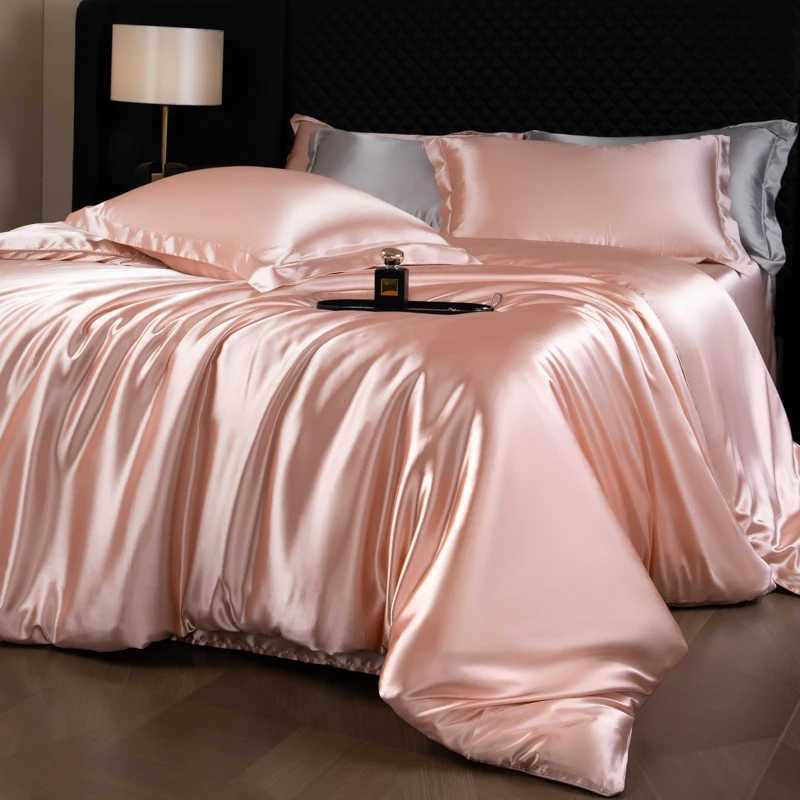
Silk vs. Cotton
Silk and cotton represent fundamentally different approaches to bedding, each with distinct characteristics. While both are natural fibers, they differ significantly in feel and performance. Cotton offers a familiar, soft comfort that becomes increasingly comfortable with washing, while silk provides an immediate smooth, cool touch with a distinctive drape and sheen.
In terms of moisture management, the silk versus cotton comparison reveals significant differences. Cotton absorbs moisture readily (up to 27% of its weight), which helps wick sweat away but can create a damp sleep environment. Silk absorbs less moisture (around 11%) but wicks effectively, maintaining a consistently dry surface feel that benefits both skin health and temperature regulation.
Durability presents another contrast—quality silk typically lasts 5-10 years with proper care, while cotton sheets generally require replacement after 2-5 years. However, cotton withstands more aggressive washing and higher temperatures than silk’s delicate care requirements.
From an environmental perspective, both materials offer benefits and drawbacks. Cotton requires significant water resources but is biodegradable, while silk production consumes fewer resources but raises ethical questions regarding silkworm cultivation.
The price difference remains substantial, with premium cotton sheets typically costing 25-50% of comparable silk options. This price gap represents the most significant barrier for many consumers considering silk bedding.
Silk vs. Satin (Polyester)
Many consumers confuse silk and satin, but understanding their differences is crucial. Silk refers to the natural protein fiber, while satin describes a weave pattern that can be applied to multiple fibers, including polyester. Polyester satin offers a similar glossy appearance to silk at a fraction of the cost but differs fundamentally in performance.
The breathability contrast proves particularly significant—silk’s natural fibers allow air circulation and moisture transfer, while polyester satin tends to trap heat and perspiration against the skin. This difference becomes especially noticeable during warmer weather or for hot sleepers.
For skin and hair benefits, silk contains natural proteins and amino acids that benefit these tissues, while polyester lacks these inherent properties. Additionally, natural silk creates less friction against skin and hair compared to even the smoothest polyester satin.
From an environmental standpoint, silk biodegrades naturally while polyester satin can take decades or centuries to decompose. This environmental consideration becomes increasingly important for environmentally conscious consumers.
The substantial price difference (polyester satin typically costs 10-25% of genuine silk) makes satin appealing for budget-conscious consumers, but the performance differences mean these materials aren’t truly comparable alternatives.
Silk vs. Bamboo Lyocell
Bamboo lyocell represents one of the closest natural alternatives to silk in terms of performance and feel. Both fabrics offer exceptional smoothness and breathability, though through different mechanisms. Bamboo lyocell provides a cool, almost liquid-like drape similar to silk but with a slightly less lustrous appearance.
From a sustainability perspective, bamboo grows rapidly with minimal resources, making bamboo lyocell appealing to environmentally conscious consumers. However, the processing required to transform bamboo into fabric involves chemical treatments that offset some of these environmental benefits.
Both materials offer excellent temperature regulation, but silk typically provides superior moisture management. Durability remains comparable when proper care instructions are followed, though bamboo lyocell generally withstands more frequent washing than silk.
For those seeking vegan silk bedding alternatives, bamboo lyocell represents one of the best options, offering many similar benefits without animal products. The traditional versus vegan silk comparison reveals these alternatives can provide comparable performance through different mechanisms and materials.
Expert Care Guide: Maintaining Your Silk Bedding Investment
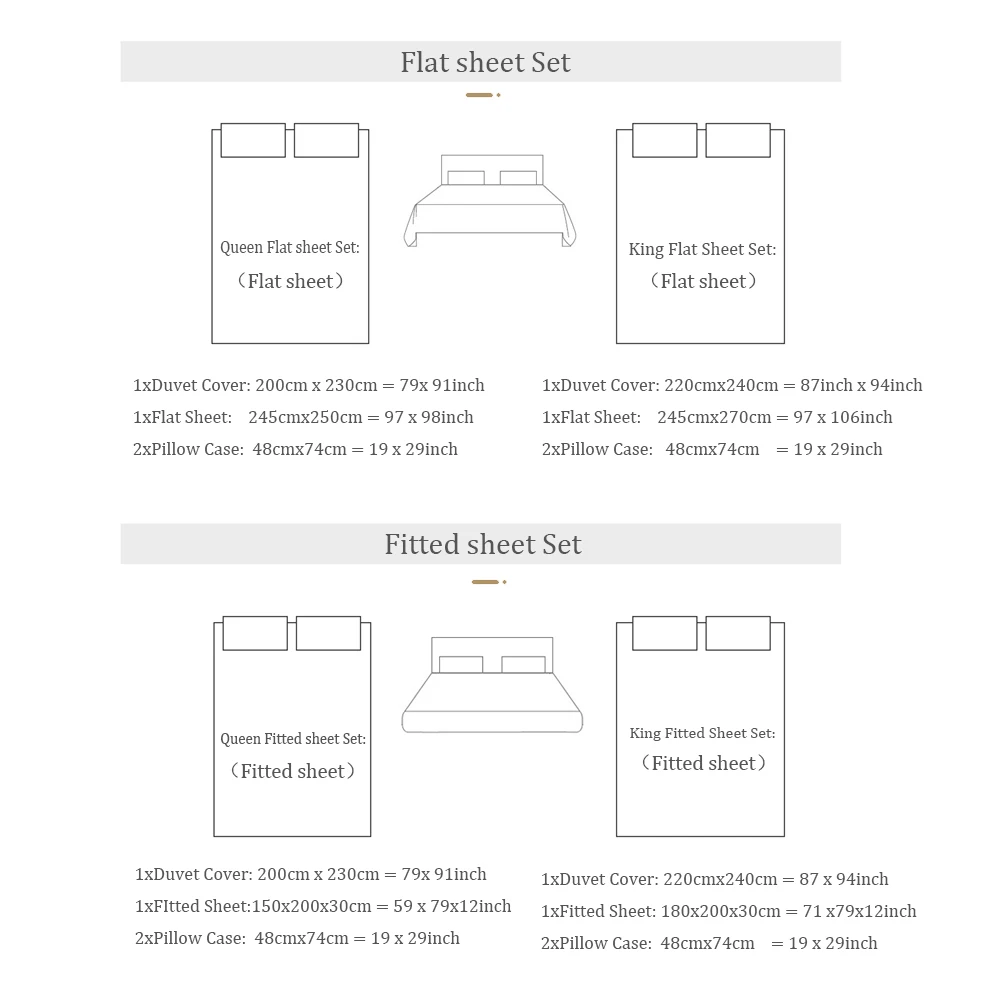
Washing Guidelines
Proper washing techniques significantly extend the lifespan of your silk bedding. For optimal results, hand washing represents the gentlest approach. Use room temperature water (never hot) with a pH-neutral detergent specifically formulated for silk or delicates. Gently swirl the silk in soapy water without wringing, squeezing, or scrubbing, which can damage the fibers.
If machine washing becomes necessary, use these specific settings:
– Delicate/gentle cycle only
– Cold water (30°C/86°F maximum)
– Mesh laundry bag to prevent snagging
– No other items in the same load
Detergent selection proves critically important—use only pH-neutral products free from enzymes, brighteners, and bleach. Common laundry additives like fabric softener, bleach, and stain removers can permanently damage silk’s protein structure and should never be used.
For stains, immediate attention yields the best results. Blot (never rub) the stain with cold water and a small amount of silk-safe detergent, working from the outside toward the center. For persistent stains, consult professional cleaners rather than using harsh chemical treatments.
Most experts recommend washing silk bedding every 7-10 days, similar to regular bedding. However, silk naturally repels dirt and body oils more effectively than cotton, sometimes allowing slightly longer intervals between washings.
Drying Methods
Proper drying techniques protect silk’s integrity and appearance. Air drying remains the only recommended approach, as even the gentlest dryer settings can damage silk fibers. After washing, gently press (don’t wring) excess water from the fabric between clean towels.
For optimal results:
– Lay items flat on a clean, dry towel away from direct sunlight
– Reshape while damp to maintain proper dimensions
– Flip occasionally for even drying
– Allow complete drying before using or storing
Never hang heavy silk items like sheets when wet, as the weight of water can stretch and distort the fabric. Similarly, avoid direct sunlight and heat sources (radiators, heating vents) which can cause yellowing and fiber deterioration.
Properly dried silk should maintain its original dimensions and appearance. If you notice changes in size, shape, or texture after drying, adjust your technique for future washings.
Ironing and Steaming
While silk’s natural properties resist wrinkling more effectively than many fabrics, occasional pressing may enhance appearance. If ironing, use these specific techniques:
– Iron only when silk is slightly damp (not wet or completely dry)
– Use the lowest heat setting specifically for silk
– Place a clean cotton cloth between the iron and silk as a pressing cloth
– Iron on the reverse/matte side whenever possible
– Keep the iron moving rather than resting in one spot
For gentler results, steaming offers an excellent alternative. Hold the steamer 4-6 inches away from the fabric, allowing the steam to release wrinkles without direct contact. This method proves particularly effective for duvet covers and other large items.
Avoid applying heat to any stained areas, as this can permanently set the stain. Similarly, never use starch on silk, as it damages the natural fibers and reduces their lifespan.
Storage Best Practices
Proper storage between uses protects silk’s integrity. Store fully dry silk bedding in cool, dry environments away from direct sunlight and high humidity, which can promote mildew growth or fiber deterioration.
Choose storage containers carefully:
– Cotton or linen storage bags allow airflow while protecting from dust
– Acid-free tissue paper prevents creasing during storage
– Avoid plastic containers which trap moisture and prevent breathing
Cedar products and mothballs, while effective for wool, can damage silk and should be avoided. Instead, lavender sachets provide a pleasant scent and some insect deterrent properties without risking damage.
For long-term storage, clean items thoroughly before storing, as invisible body oils or food particles can attract insects or cause yellowing over time. Fold items with as few creases as possible, and refold occasionally during extended storage to prevent permanent crease lines.
Common Care Mistakes to Avoid
Several common care mistakes significantly reduce silk’s lifespan. Avoid these critical errors:
1. Using hot water, which damages protein fibers and causes shrinkage
2. Applying bleach or enzyme-containing detergents that break down silk proteins
3. Wringing or twisting wet silk, which breaks fibers and distorts fabric
4. Direct sunlight exposure, which causes yellowing and weakening
5. Storing while damp, which promotes mildew growth
If minor damage occurs, address it promptly. Small snags should be trimmed carefully rather than pulled, which can create runs. Minor stains respond best to immediate treatment rather than aggressive later intervention.
For significant damage or heirloom-quality items, professional silk cleaning services offer specialized care techniques that preserve your investment. The ultimate guide to luxury silk bedding provides additional maintenance advice for preserving your silk bedding investment.
The Practical Reality: Pros and Cons of Silk Bedding
The Advantages (Recap)
Silk bedding offers an unparalleled combination of luxury and practical benefits. The immediate sensory experience—cool, smooth texture against skin—creates a distinctly premium sleep environment that many users describe as transformative. This tactile quality combines with silk’s visual luxury, creating bedding that enhances both comfort and bedroom aesthetics.
The scientifically-validated benefits for skin and hair health represent significant advantages for many users. Reduced friction minimizes sleep creases and hair breakage, while natural proteins and amino acids support skin health during the crucial overnight repair process.
Temperature regulation stands as another significant advantage, particularly for couples with different temperature preferences or individuals experiencing temperature fluctuations during sleep. Silk’s natural ability to both insulate and release heat creates a consistently comfortable sleep environment across seasons.
For sensitive individuals, silk’s hypoallergenic properties offer practical benefits beyond luxury. The tight weave resists dust mites, while the natural fiber composition typically causes fewer reactions than synthetic alternatives. These silk bedding comfort essentials make it particularly valuable for those with allergies, sensitive skin, or respiratory concerns.
From a long-term perspective, properly maintained silk bedding often outlasts cotton and synthetic alternatives, providing extended value despite higher initial costs. This longevity, combined with silk’s biodegradability, also offers environmental advantages over petroleum-based synthetic bedding options.
The Considerations
Despite its numerous benefits, silk bedding presents practical considerations that influence its suitability for different households. The significant initial investment compared to conventional bedding represents the primary barrier for many consumers. Quality silk bedding sets typically cost 3-5 times more than premium cotton equivalents—a substantial difference that requires justification through perceived benefits.
The specialized care requirements add another practical consideration. While not excessively complicated, silk demands more careful washing, drying, and storage than conventional bedding materials. These requirements may prove challenging in households with limited time for specialized laundry care or without suitable air-drying space.
Silk’s delicate nature creates vulnerability to certain damage types. Water spots from improper drying, pulls from jewelry or rough skin, and potential yellowing from sunlight exposure all represent risks that require mitigation through careful handling and appropriate storage.
Practical functionality concerns include silk’s tendency to slide off beds without proper sheet grips or deep pocket designs. Some users also note that silk’s cooling properties, while beneficial for hot sleepers, may feel uncomfortably cool during winter months without appropriate layering.
Making an Informed Decision
Silk bedding provides the greatest benefit for specific individuals, particularly those experiencing skin irritation from conventional bedding, struggling with hair breakage or frizz, or dealing with temperature regulation challenges during sleep. Those who prioritize luxury sleep experiences or have specific allergies may find the investment particularly worthwhile.
For those uncertain about committing to complete silk bedding, starting with pillowcases offers a lower-cost introduction to silk’s benefits. This approach allows you to experience the skin and hair advantages while assessing whether the care requirements fit your lifestyle before investing in complete sets.
When considering silk bedding, evaluate both the potential benefits and practical considerations against your specific needs, preferences, and lifestyle constraints. This balanced approach leads to satisfaction with whatever decision you make regarding this premium bedding option.
Common Questions About Silk Bedding Answered
Basic Information Questions
Is silk bedding really worth the price?
For many users, yes. The combination of comfort benefits, skin and hair improvements, and extended lifespan often justifies the premium price for those who can afford the initial investment. The value proposition improves when considering the 5-10 year lifespan of properly maintained silk compared to the 2-3 year average for conventional bedding.
How long does quality silk bedding typically last?
With proper care, high-quality silk bedding typically lasts 5-10 years before showing significant wear. This extended lifespan partially offsets the higher initial cost compared to cotton or synthetic bedding that generally requires replacement after 2-5 years.
Can silk bedding be used year-round?
Yes. Silk’s natural temperature-regulating properties make it suitable for all seasons. It helps keep you cool in summer by wicking moisture away from the body and provides insulation during winter months. Some users layer additional blankets during extreme cold while maintaining silk as their skin-contact layer.
Does silk bedding make noise when you move?
High-quality silk produces minimal noise. Lower-quality silk or silk blends may create a rustling sound, but premium silk with appropriate momme weight (19-25) typically moves quietly. If noise occurs, it often indicates a synthetic blend or very low momme weight.
Will silk bedding slide off my bed?
Quality silk sheets designed specifically for bedding include features to prevent sliding, such as deep pockets, strong elastic, and sometimes silicone grips. Proper fitting according to mattress depth significantly reduces slipping issues.
Care and Maintenance Questions
Can silk bedding be machine washed?
Yes, with specific precautions. Use a mesh laundry bag, cold water only, gentle cycle, and silk-specific pH-neutral detergent. However, hand washing remains the safest method for preserving silk’s integrity and extending its lifespan.
How often should silk bedding be washed?
Every 7-10 days, similar to other bedding materials. However, silk naturally repels dirt and body oils more effectively than cotton, sometimes allowing slightly extended periods between washings without compromising cleanliness.
What happens if silk gets wet?
When wet, silk becomes more vulnerable to damage and can show water spots if dried improperly. If silk bedding gets wet, gently blot excess moisture with a clean towel and allow it to air dry away from direct heat or sunlight. Never wring or twist wet silk.
Can I use fabric softener on silk?
No. Fabric softeners contain chemicals that damage silk’s protein fibers and reduce its natural softness over time. Silk naturally maintains its soft hand without additives when properly washed.
How do I remove stains from silk bedding?
Address stains immediately by gently blotting (never rubbing) with cold water and a small amount of silk-safe detergent. Work from the outside edge toward the center. For persistent stains, consult professional cleaners rather than using spot treatments or stain removers which can damage silk.
Quality and Selection Questions
What’s the difference between silk and satin bedding?
Silk is a natural protein fiber produced by silkworms, while satin refers to a weave pattern that can be made from various materials, including polyester, nylon, or silk. Polyester satin provides a similar appearance to silk at a lower price point but lacks silk’s breathability, temperature regulation, and skin benefits.
How can I tell if silk bedding is genuine?
Genuine silk has a distinctive luster that changes color slightly when viewed from different angles. It feels cool to the touch initially but quickly warms. When rubbed, real silk creates a subtle rustling sound rather than a synthetic “swoosh.” Legitimate sellers specify the exact momme weight, grade, and silk type rather than using vague terminology.
What momme weight is best for beginners?
For those new to silk bedding, 19-22 momme provides an excellent balance of durability and value. This range offers authentic silk benefits without the highest price point of heavier weights while still providing sufficient durability for regular use.
Do silk sheets wrinkle easily?
Silk naturally resists wrinkles more effectively than cotton, but it can still develop creases, particularly during storage or shipping. These typically relax when the bedding is placed on the bed. For a crisp appearance, gentle steaming rather than ironing provides the best results.
Is silk bedding sustainable or ethical?
Traditional silk production involves harvesting silk from cocoons, ending the silkworm’s lifecycle. For those with ethical concerns, peace silk (allowing moths to emerge before harvesting) or plant-based silk sheet and pillowcase sets provide alternatives. From a sustainability perspective, silk biodegrades naturally, unlike synthetic alternatives, though its production requires specific agricultural conditions.
Special Situations Questions
Is silk bedding suitable for people with allergies?
Yes, silk’s natural resistance to dust mites, mold, and mildew makes it an excellent choice for allergy sufferers. Additionally, properly processed silk typically contains fewer chemical residues than conventional bedding, potentially reducing irritation for those with chemical sensitivities.
Can silk bedding help with night sweats or menopause symptoms?
Many users report significant improvement in night sweat discomfort when using silk bedding. Silk’s temperature-regulating properties help maintain a consistent body temperature, while its moisture-wicking capabilities keep skin drier during perspiration episodes, creating a more comfortable sleep environment during these experiences.
Is silk bedding appropriate for all seasons?
Yes. Silk provides natural temperature regulation that adapts to environmental conditions. During summer, it helps dissipate heat and wick moisture; during winter, it provides insulation while still allowing skin to breathe. This versatility makes it suitable year-round, though some users add additional layers during extreme cold.
Does silk bedding work with adjustable beds?
Yes, quality silk fitted sheets designed for bedding typically include deep pockets and strong elastic that accommodate the movement of adjustable beds. Look for fitted sheets specifically mentioning deep pockets (15-18 inches) for the best fit with adjustable or thick mattresses.
Styling Tips: Integrating Silk Bedding Into Your Bedroom Design
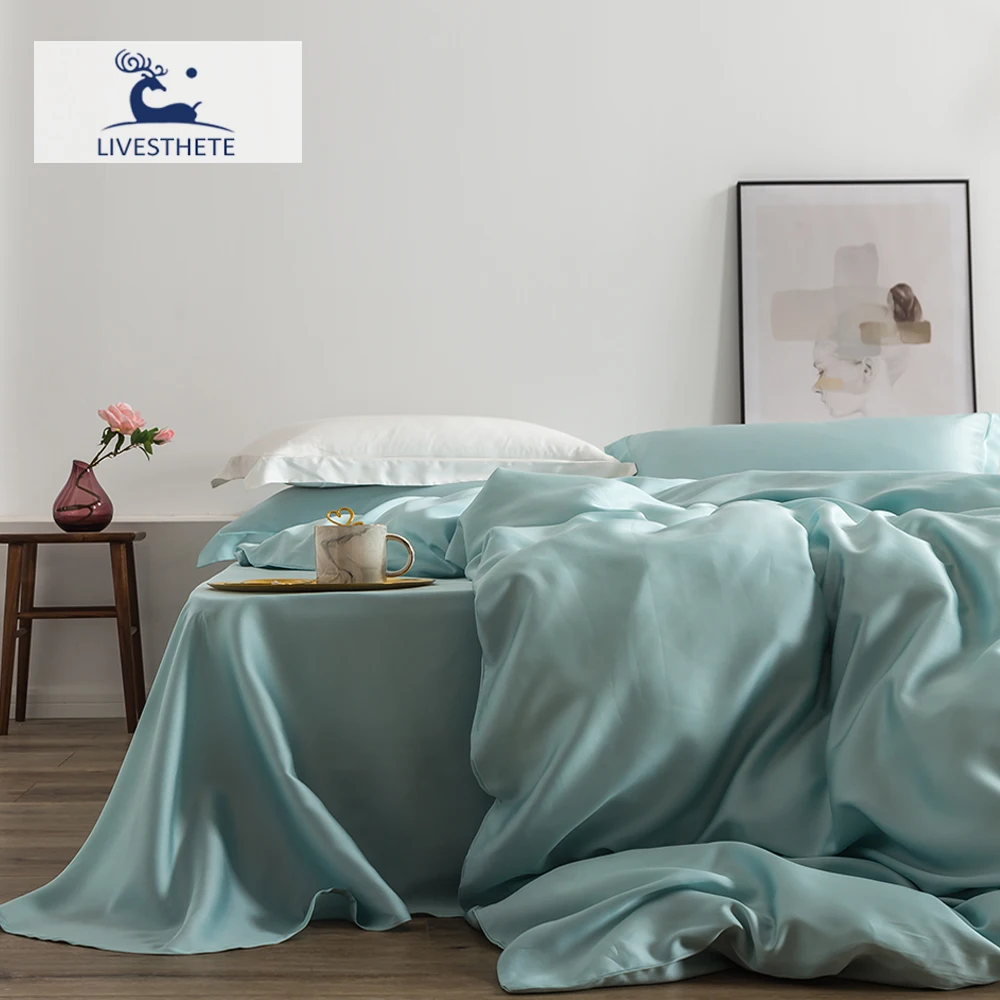
Color Selection Principles
Silk’s natural luster dramatically influences color perception, creating depth and dimension beyond flat colors. This luminous quality means colors appear richer and more complex on silk than on matte fabrics like cotton or linen. When selecting silk bedding colors, consider how this sheen will interact with both natural and artificial lighting in your bedroom.
For contemporary bedrooms, neutral tones like ivory, champagne, silver gray, and taupe create a sophisticated foundation that complements various design styles. These versatile shades pair beautifully with both bold accents and subtle tone-on-tone schemes. For more dramatic spaces, deeper jewel tones like emerald, sapphire, or amethyst showcase silk’s light-reflecting properties particularly well.
Seasonal considerations may influence color choices—lighter shades like soft blue, pale pink, or ivory create an airy summer feel, while deeper tones like burgundy, forest green, or charcoal add visual warmth during winter months. Styling bedrooms with silk bedding often involves creating these seasonal transitions through accessories rather than replacing the bedding itself.
Texture Combinations
Creating visual and tactile interest through thoughtful texture combinations enhances silk’s luxury appeal. Pairing silk with complementary textures creates a sophisticated, layered effect that elevates bedroom design. Consider these successful combinations:
– Silk + velvet: Combines two luxurious textures with different visual effects
– Silk + linen: Contrasts silk’s smoothness with linen’s natural slubbed texture
– Silk + cashmere: Layers two different types of softness for ultimate luxury
– Silk + textured cotton: Creates affordable contrast while maintaining comfort
For seasonal adaptation, layering provides both visual interest and practical comfort. Summer arrangements might feature silk sheets with a lightweight linen coverlet, while winter designs could add plush velvet or cashmere throws atop silk duvet covers for added warmth without sacrificing silk’s skin benefits.
Creating a Cohesive Look
Integrating silk bedding into your overall bedroom design requires balancing luxury with practicality. For maximum impact, consider making silk bedding the focal point through strategic color choices and minimal pattern competition. Simple, elegant bedroom furnishings in complementary tones allow the silk’s natural luster to take center stage.
For those not ready to commit to complete silk bedding sets, mixing silk pieces with conventional bedding offers a practical introduction. Silk pillowcases paired with high-quality cotton sheets provide skin and hair benefits while moderating costs. Similarly, a silk duvet cover over a conventional insert creates luxury impact where most visible.
Accessories like decorative cushions in coordinating colors or complementary textures help integrate silk bedding into the broader room design. These smaller elements can bridge between the bedding and other room elements like window treatments, wall colors, or furniture finishes to create a harmonious overall aesthetic.
Is Silk Bedding Right for You? Making Your Decision
Silk bedding represents a significant departure from conventional bedding options—both in luxury experience and investment level. As we’ve explored throughout this guide, silk offers unique benefits that extend beyond simple aesthetics, potentially improving skin health, hair condition, and sleep quality through its natural properties.
When considering whether silk bedding makes sense for your situation, evaluate your specific sleep challenges and priorities. Those struggling with temperature regulation during sleep, experiencing skin irritation from conventional fabrics, or concerned about hair breakage may find particular value in silk’s natural characteristics. Similarly, allergy sufferers often report significant improvement when switching to silk’s naturally hypoallergenic surface.
Your lifestyle and maintenance willingness represent equally important considerations. Silk’s care requirements, while not overly complicated, demand more attention than throw-in-the-washer-and-dryer cotton alternatives. Honestly assess whether these maintenance needs fit comfortably within your household routines before investing in complete sets.
For those intrigued but hesitant about the investment, starting with a single silk pillowcase offers an excellent introduction to silk’s benefits. This approach allows you to experience the immediate advantages for facial skin and hair while evaluating whether the care requirements and feel match your preferences before committing to complete bedding sets.
Remember that quality sleep represents one of the most significant factors in overall wellness and daily functioning. Viewed through this lens, bedding becomes an investment in health rather than merely a household expense. The ultimate guide to silk bedding explores these considerations in greater depth to help inform your decision.
Sanctuary Soft’s premium silk bedding collections embody the quality characteristics we’ve discussed—from optimal momme weights to meticulous construction details—creating sleep environments that balance luxury with practical benefits. Whether you choose to incorporate silk bedding fully or selectively into your sleep routine, understanding these quality factors ensures you’ll make choices that enhance both comfort and wellness for years to come.

